Upgrading SigningHub Enterprise
The upgrade process for SigningHub Enterprise is quick and easy. The existing data files, database schema and database entries are automatically upgraded during the process when the base (current) installation is v6.2 or higher. To upgrade to version 6.2 from version 5.x contact support@ascertia.com
Read the information in SigningHub-Upgrade-Information.pdf file before proceeding the upgrade.
ADSS Signing Server Dependency
It provides necessary information to complete the upgrade from SigningHub v7.0.x and onwards to the latest version.
ADSS Signing Server should also be upgraded to the supported version before upgrading SigningHub Enterprise. Since ADSS is a separate package, in order to upgrade it, the user will need to download the latest ADSS package from https://www.ascertia.com and install it using the relevant ADSS guides.
Upgrade Procedure
Follow these instructions to upgrade an older version of SigningHub Enterprise to the latest version.
Launch the installer by right-clicking the file name [SigningHub Installation Directory]/setup/install.bat and select Run as administrator.
Follow the installation wizard as described previously until the Installation Type screen is shown:
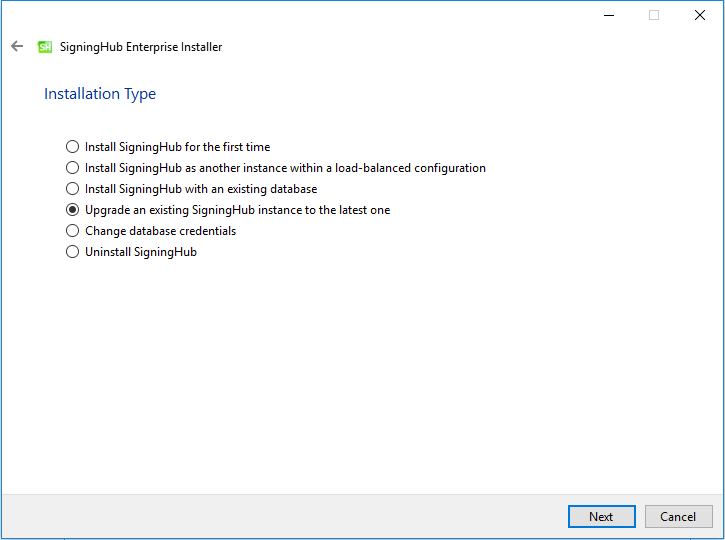
Click the Next button to view and accept the license agreement:

Click the I Agree button to proceed.
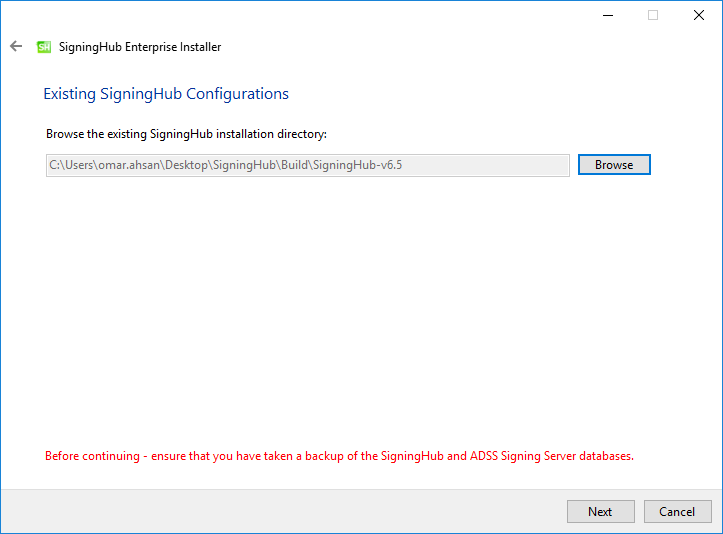
Click Browse and define the path to the existing SigningHub Enterprise installation directory.
Click the Next button to select the SigningHub data storage directory:
On the SigningHub Document Storage Configurations screen you can either choose a File System Storage or Azure Blob Storage or Database Storage.
If the Document Storage is either on local file system or on the local network path, then select the option File System Storage.
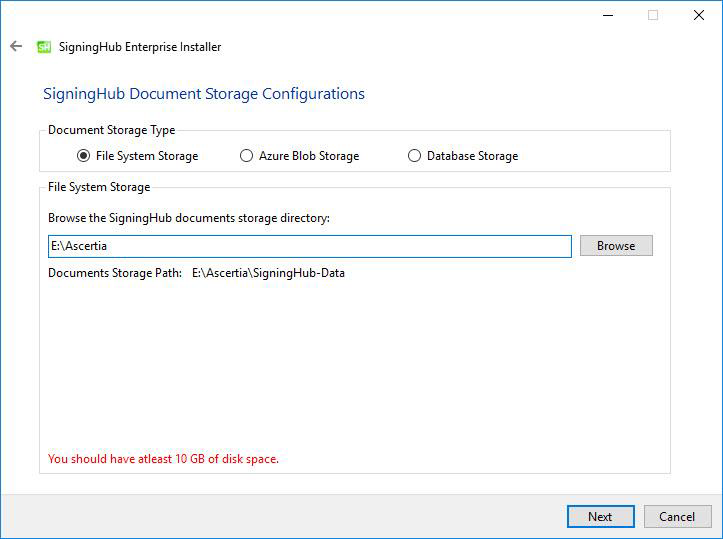
The information displayed above is an example and you should configure the relevant settings for your own environment.
Click Browse and specify a storage path to store the SigningHub data.
|
|
Document Storage path can be a local drive, a network drive or an Azure blob. If the path is on a local drive, then the installer will automatically assign the read/write permissions to the IIS_IUSRS user group.
|
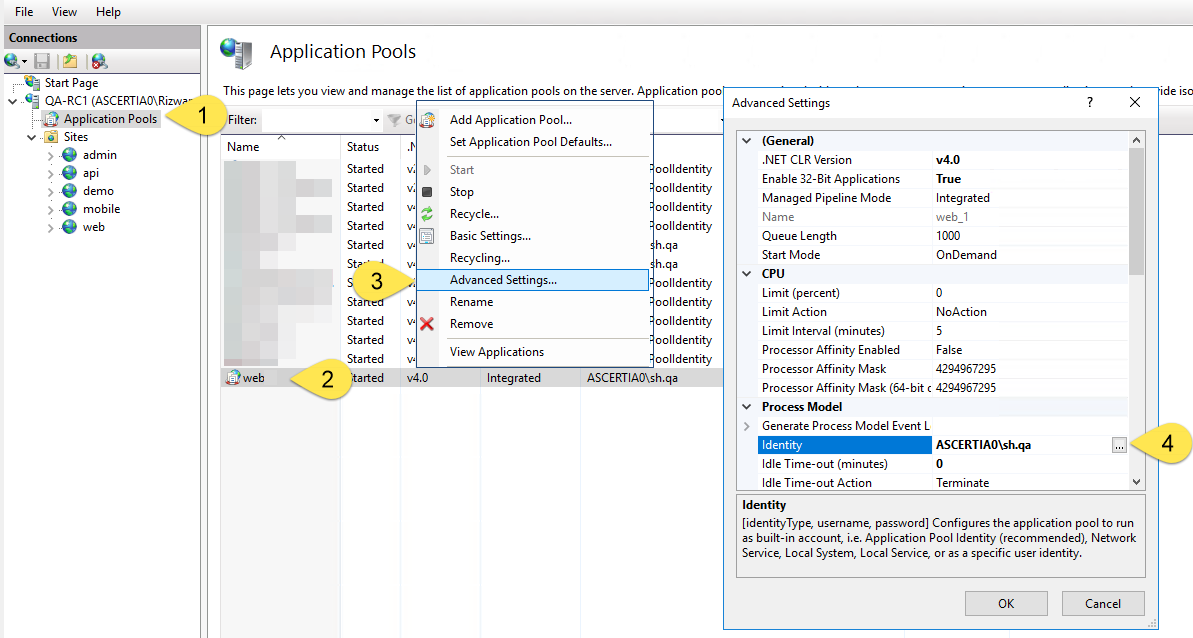
If this is not a File System Storage and you choose the second option to Azure Blob Storage then the following screen is shown:
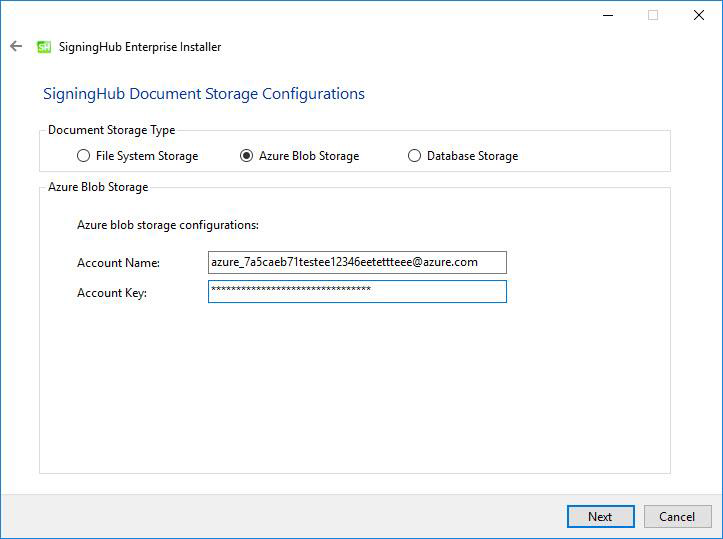
The information displayed above is an example and you should configure the relevant settings for your own environment.
The following table details the configuration options:
|
Item |
Description |
|
Account Name |
Account Name of the Azure. Note this must exist prior to the installation. |
|
Account Key |
Account Key of the Azure. Note this must exist prior to the installation. |
If this is not a File System Storage and you choose the third option to Database Storage then the following screen is shown:
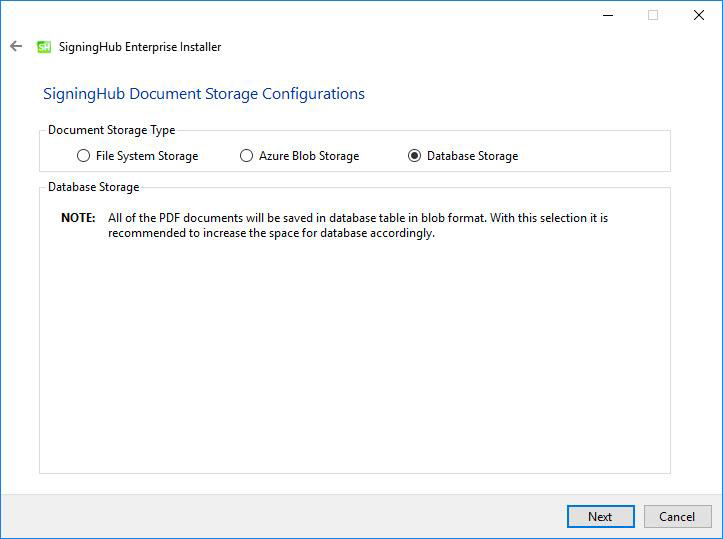
Click the Next button to proceed. The following screen for Redis Server will appear:
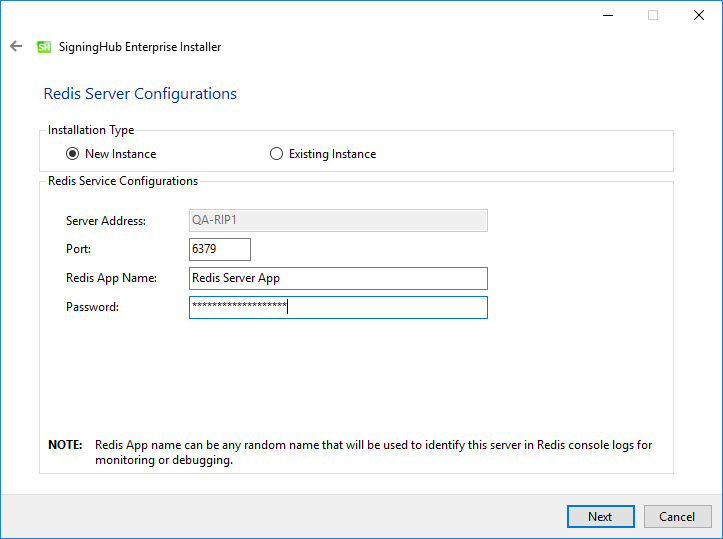
|
|
Redis is a light weight server, which works as backplane and message broker for SigningHub application over an HTTP/s port. For further information, https://redis.io/
|
On the Redis Server Configurations screen you can either choose a New Instance or Existing Instance option. If this is a new instance, then use the first option i.e. New Instance and provide the appropriate Redis server configurations.
The information displayed above is an example and you should configure the relevant settings for your own environment.
The following table details the configuration options:
|
Item |
Description |
|
Server Address |
Specify the Redis server address. This server is used to send real time on screen notifications for document sharing. |
|
Port |
Specify the service port for the Redis server. |
|
Redis App Name |
Specify the name of Redis App. This can be any random name that will be used to identify this server in Redis console logs for monitoring or debugging. |
|
Password |
Specify the password to authenticate the Redis server. |
|
|
Redis can enforce password-based security to save or read the key value pairs from the Redis server. To enable password-based security, follow these instructions:
|
|
|
Redis can disable asking for password for saving and reading the key value pairs from the Redis server. To turn off the password, follow these instructions:
|
|
|
For Load balanced deployments, only one instance of Redis is needed for SigningHub to work with. Rest of the instances of SignignHub will communicate with Redis using HTTP/s address and Port configured in SigningHub Admin. |
If this is not a new instance, and you are choosing the second option i.e. Existing Instance then the following screen will appear:
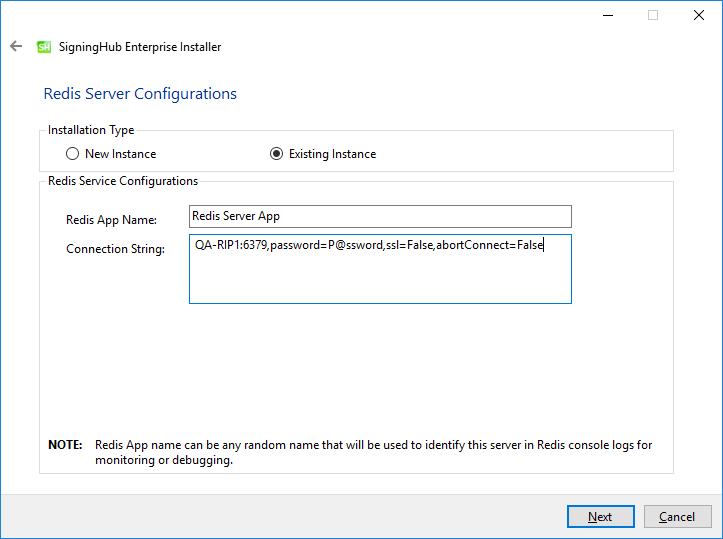
The information displayed above is an example and you should configure the relevant settings for your own environment.
The following table details the configuration options:
|
Item |
Description |
|
Redis App Name |
Specify the name of Redis App. This can be any random name that will be used to identify this server in Redis console logs for monitoring or debugging. |
|
Connection String |
The following is a sample connection string for a Redis Server: [Redis Server Address]: [port], password=[Redis Server Password],ssl=False,abortConnect=False |
Click the Next button to select specific modules:
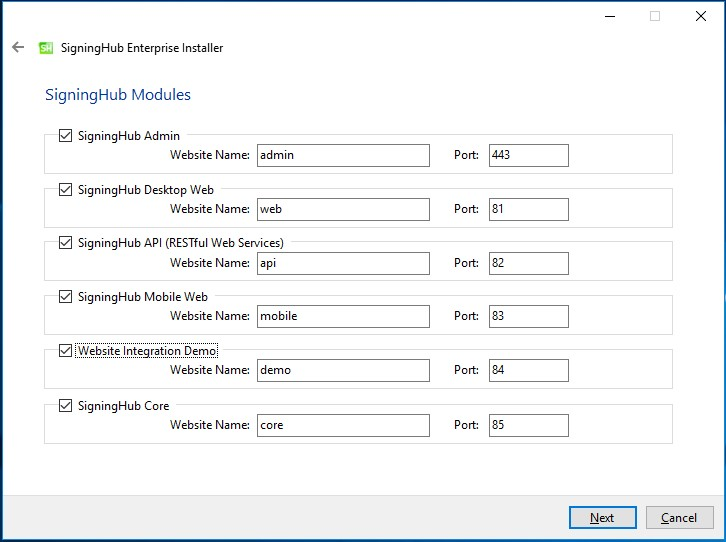
This screen shows a list of all SigningHub Enterprise modules. Components that are already installed are displayed but grayed out, while any SigningHub Enterprise module(s) that have not been installed previously can be selected for installation during the upgrade.
Click the Next button to see the upgrade summary:
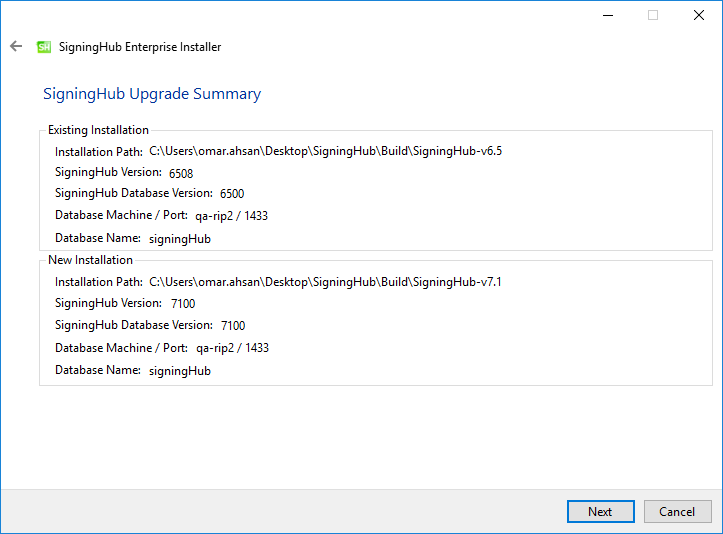
Click the Next button to start the upgrade progress.
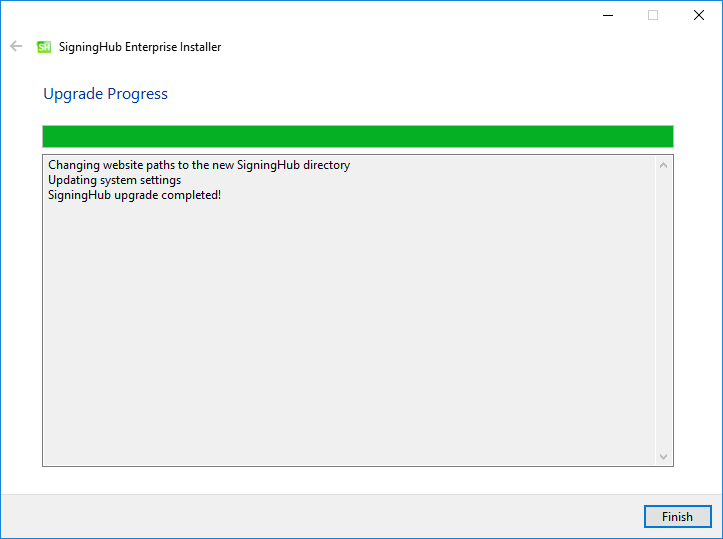
Click the Finish button to complete the SigningHub Enterprise upgrade process.





